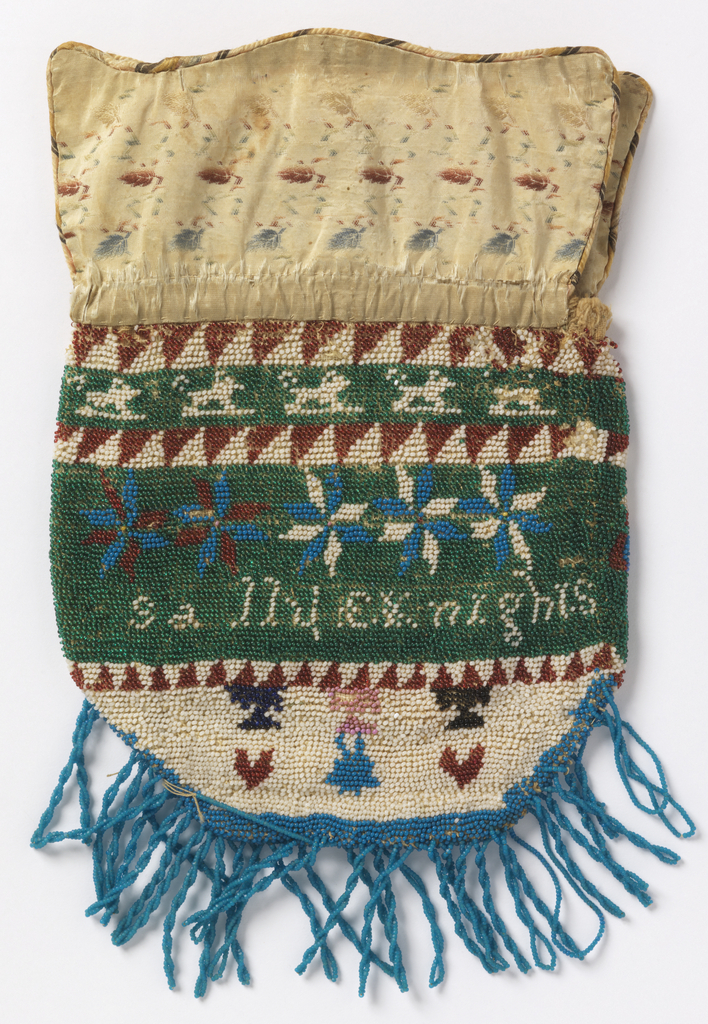This silk bag is embroidered with colorful glass beads and embellished with a blue beaded fringe trim. The body is decorated with rows of flowers, dogs, birds, and stars. A notable feature is the inscription “Sally Exnights” and “Watersbourough 1837.” Inscriptions noting the name and home of the maker and the date of completion were commonly used in embroidered samplers.
The drawstring bag is also known by another name, reticule, a forerunner to the modern day purse or handbag. Through the eighteenth century, women wore pockets as a separate garment underneath their voluminous skirts. The introduction of sheer “empire” style gowns at the end of the century, and the impossibility of wearing pockets beneath them, gave rise to the fashionable reticule or small handbag.
Early examples of beaded bags are designed with a drawstring closure at the top and decorative fringe or a tassel skirting the bottom. The style of the reticule began to change around the time of the Industrial Revolution. Drawstring bags waned in popularity as ornate metal clasps became widely available and replaced the drawstring as the method of closure, a style which is used by designers to this day.
The beaded bag is still sought after by collectors and consumers. Judith Leiber, Prada, and Chanel are just a few contemporary designers who continue to delight us with the cherished, embellished beaded bag. Its legacy is dazzling!
Jean Pearson has been a volunteer docent at Cooper Hewitt, National Design Museum since 1989.
